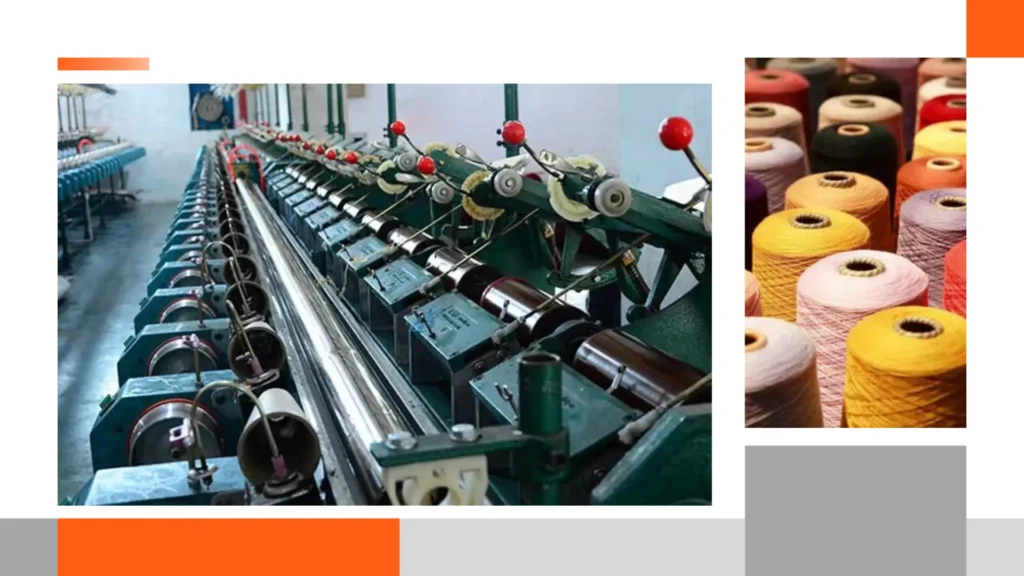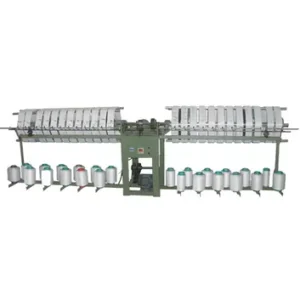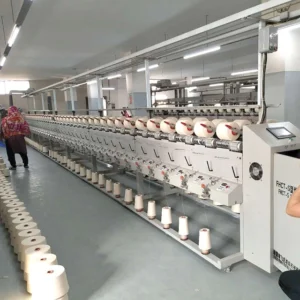In today’s world, sustainability is more than just a buzzword; it’s a necessity that reflects the urgent need to protect our planet and its resources for future generations.
For textile manufacturers, adhering to global sustainability standards not only enhances brand reputation but also ensures long-term viability in a competitive market, as consumers increasingly seek out environmentally responsible products that align with their values.
This article provides an accessible guide to help manufacturers understand and implement these essential standards, empowering them to make meaningful contributions to a more sustainable future while benefiting their bottom line.
What Are Global Sustainability Standards in Textile Manufacturing?
Understanding Sustainability Standards
Global sustainability standards encompass a set of guidelines and practices that aim to minimize environmental impact while promoting social responsibility in textile manufacturing.
These standards are designed to regulate various aspects of the production process, from raw material sourcing to waste management, ensuring that manufacturers take a holistic approach to sustainability.
Importance of Compliance
Compliance with these standards is crucial, as it not only reflects the company’s commitment to sustainable practices but also builds trust with consumers.
Adhering to these guidelines demonstrates a manufacturer’s responsibility towards environmental stewardship and social equity, which can significantly influence consumer purchasing decisions.
Different Types of Standards
Various organizations establish standards, such as the Global Organic Textile Standard (GOTS), OEKO-TEX, and the Fair Trade Certified label, each focusing on different aspects of sustainability.
Understanding the nuances of these certifications is essential for manufacturers to choose the ones that align best with their production methods and target market.
Responding to Consumer Demand
As consumers increasingly prefer eco-friendly and ethically-produced textiles, compliance with sustainability standards can provide a competitive edge.
This shift in consumer behavior emphasizes the importance of transparency in sourcing and production, pushing manufacturers to adopt sustainable practices to meet market expectations.
And More:
- How to Source Sustainable Raw Materials for Textile Manufacturing
- Selecting the Appropriate Automation Technology for Sustainable Textile Production
Why Should Textile Manufacturers Care About Sustainability?
Enhancing Brand Image
Embracing sustainability can significantly improve a brand’s image, attracting environmentally-conscious consumers.
This enhancement not only solidifies existing customer loyalty but also positions the brand as a leader in the market, attracting new customers who prioritize sustainable choices.
Cost Savings Through Efficiency
Implementing sustainable practices often leads to greater efficiency, reducing costs in the long run.
By optimizing resource use, minimizing waste, and enhancing operational processes, manufacturers can lower their overall expenses while contributing to environmental protection.
Regulatory Compliance
With governments worldwide tightening regulations on environmental issues, being proactive in sustainability can help manufacturers stay ahead of the curve.
By adopting sustainable practices early, companies can avoid potential fines and penalties, leading to smoother operations and better relations with regulatory bodies.
Access to New Markets
Sustainability certifications can open doors to new markets that prioritize ethical sourcing.
Many retailers and consumers are now seeking partners who demonstrate a commitment to sustainable practices, so having these certifications can enhance competitiveness and expand market reach.
How Can Textile Manufacturers Assess Their Current Practices?
Conducting a Sustainability Audit
A thorough audit can identify areas of improvement in resource usage, waste management, and labor practices.
This process involves a comprehensive evaluation of operations, allowing manufacturers to pinpoint inefficiencies and implement targeted strategies to enhance their sustainability efforts.
Employee Training and Engagement
Training employees on sustainability practices can foster a culture of responsibility and innovation within the organization.
By ensuring that all team members are aware of their role in promoting sustainability, manufacturers can create an engaged workforce that is motivated to contribute to the company’s environmental goals.
Benchmarking Against Industry Standards
Comparing current practices with those of industry leaders can highlight gaps and opportunities for improvement.
This benchmarking process not only provides insight into best practices but also allows manufacturers to set realistic targets for enhancing their own sustainability efforts.
Feedback from Stakeholders
Engaging with stakeholders, including consumers and suppliers, can provide insights into areas needing attention.
By soliciting feedback, manufacturers can better understand market expectations and identify specific attributes that enhance their sustainability profile, thus aligning their practices with consumer values.
What Steps Can Be Taken to Achieve Compliance?
Developing a Sustainability Plan
A strategic plan outlining specific sustainability goals and actions is essential for compliance.
This plan should include measurable objectives, timelines, and responsibilities, enabling manufacturers to track their progress and make necessary adjustments along the way.
Implementing Sustainable Practices
Integrating practices such as water-efficient dyeing methods and sustainable sourcing can significantly impact overall sustainability.
By adopting cutting-edge technologies and best practices, textile manufacturers can reduce their environmental footprint while also improving product quality.
Monitoring and Reporting Progress
Regularly monitoring progress and transparently reporting commitments can enhance accountability.
Through consistent evaluation of sustainability initiatives, manufacturers can demonstrate their commitment to stakeholders and identify areas for further improvement.
Collaborating with Partners
Working with suppliers, NGOs, and industry groups can provide valuable resources and support for achieving sustainability goals.
Building strong partnerships allows manufacturers to share knowledge, access innovative tools, and leverage collective efforts to drive industry-wide advancements in sustainability.
Also Read:
How Can Textile Factories Reduce Their Carbon Footprint?
What Tools Are Available to Assist with Compliance?
Software Solutions for Tracking Sustainability Metrics
Technology can streamline data collection and reporting on sustainability metrics, simplifying compliance assessment.
Advanced software solutions can automate the tracking of resource usage, emissions, and waste management, allowing manufacturers to easily generate reports that demonstrate compliance with sustainability standards.
Certifications and Labels
Obtaining relevant certifications can serve as proof of compliance and enhance marketability.
These certifications not only validate a manufacturer’s commitment to sustainable practices but also increase consumer trust, as certifications like GOTS or Fair Trade signify adherence to recognized environmental and social criteria.
Industry Guidelines and Resources
Many industry organizations provide valuable resources that outline best practices for sustainability.
These guidelines can serve as a roadmap for manufacturers, offering insights into effective strategies, tools, and technologies that can be employed to achieve sustainability goals.
Workshops and Training Programs
Participating in workshops can help manufacturers stay informed about the latest sustainability trends and technologies.
These educational opportunities allow manufacturers to network with industry experts, share experiences, and gain practical knowledge that can be directly applied to improve their sustainability efforts.
What Challenges Might Manufacturers Face in Compliance?
Initial Costs and Investments
The transition to sustainable practices may require significant upfront investments, which can deter some manufacturers.
This financial burden can be particularly challenging for small and medium-sized enterprises, highlighting the need for grants or incentives to support their shift towards sustainability.
Resistance to Change
Cultural resistance within organizations can pose a challenge when implementing new sustainable practices.
Employees may be hesitant to adapt to new processes or technologies, making it crucial for leadership to foster a culture that embraces sustainability and encourages collaboration.
Complex Regulations
Navigating the myriad of regulations and standards can be daunting, especially for smaller manufacturers.
The lack of clarity in compliance requirements can lead to confusion and unintentional violations, which emphasizes the need for ongoing education and access to expert guidance.
Supply Chain Constraints
The availability of sustainable materials and practices may be limited, affecting compliance efforts.
Manufacturers often face challenges in sourcing eco-friendly materials or finding suppliers who meet sustainability standards, which can hinder their ability to fully implement sustainable practices in their operations.
Also Read:
- Top 10 Textile Machinery Manufacturers in China
- Top 10 Yarn color card machine manufacturers in China
How Can Manufacturers Overcome These Challenges?
Securing Financial Support
Exploring grants, subsidies, and investments can alleviate the financial burden of implementing sustainable practices.
Many governments and organizations offer financial incentives specifically aimed at promoting eco-friendly initiatives, making it essential for manufacturers to actively seek out these opportunities to fund their sustainability efforts.
Fostering a Culture of Innovation
Encouraging creativity and experimentation can help overcome resistance to change.
By creating an environment where employees feel empowered to propose new ideas and solutions, manufacturers can foster a mindset that embraces sustainability and innovation as core values of the organization.
Seeking Expert Guidance
Consulting with sustainability experts can provide targeted advice and strategies for compliance.
Experienced consultants can help manufacturers navigate the complexities of sustainability standards, offering insights tailored to the specific needs and challenges of the organization, thereby accelerating their progress toward compliance.
Building Strong Supplier Relationships
Collaborating closely with suppliers can help ensure access to sustainable materials and support.
Establishing partnerships with suppliers who prioritize sustainability can enhance the reliability of sourcing eco-friendly materials, while jointly exploring innovative practices can strengthen the entire supply chain’s commitment to sustainability.
What Does the Future Hold for Sustainability in Textile Manufacturing?
Increasing Consumer Awareness
As awareness of sustainability grows, manufacturers must stay ahead of changing consumer preferences.
This heightened consciousness among consumers will continue to shape purchasing decisions, compelling manufacturers to adopt more transparent practices and communicate their sustainability efforts effectively.
Evolving Standards and Regulations
Sustainability standards will likely continue to evolve, requiring manufacturers to remain adaptable.
Staying informed about new regulations and industry trends will be crucial for manufacturers, as proactive adaptation can lead to competitive advantages in a rapidly changing market.
Technological Advancements
Innovations in materials and production processes will offer new opportunities for sustainable textile manufacturing.
As technology progresses, manufacturers will have access to cutting-edge solutions that can enhance efficiency and reduce environmental impact, leading to more sustainable business models.
A Shift Towards Circular Economy
The industry will likely shift towards a circular economy, focusing on reducing waste and maximizing resource efficiency.
This transition entails not only rethinking production processes to minimize waste but also designing products for longevity and recyclability, ultimately reshaping the entire textile manufacturing landscape.
Conclusion
Ensuring compliance with global sustainability standards in textile manufacturing is not merely a regulatory obligation; it’s a pathway to a more responsible and resilient future.
By understanding the standards, assessing current practices, and taking proactive steps towards compliance, manufacturers can contribute positively to the environment while satisfying the demands of an increasingly conscious consumer base.
Embracing sustainability is not just good for business—it’s essential for the planet.












